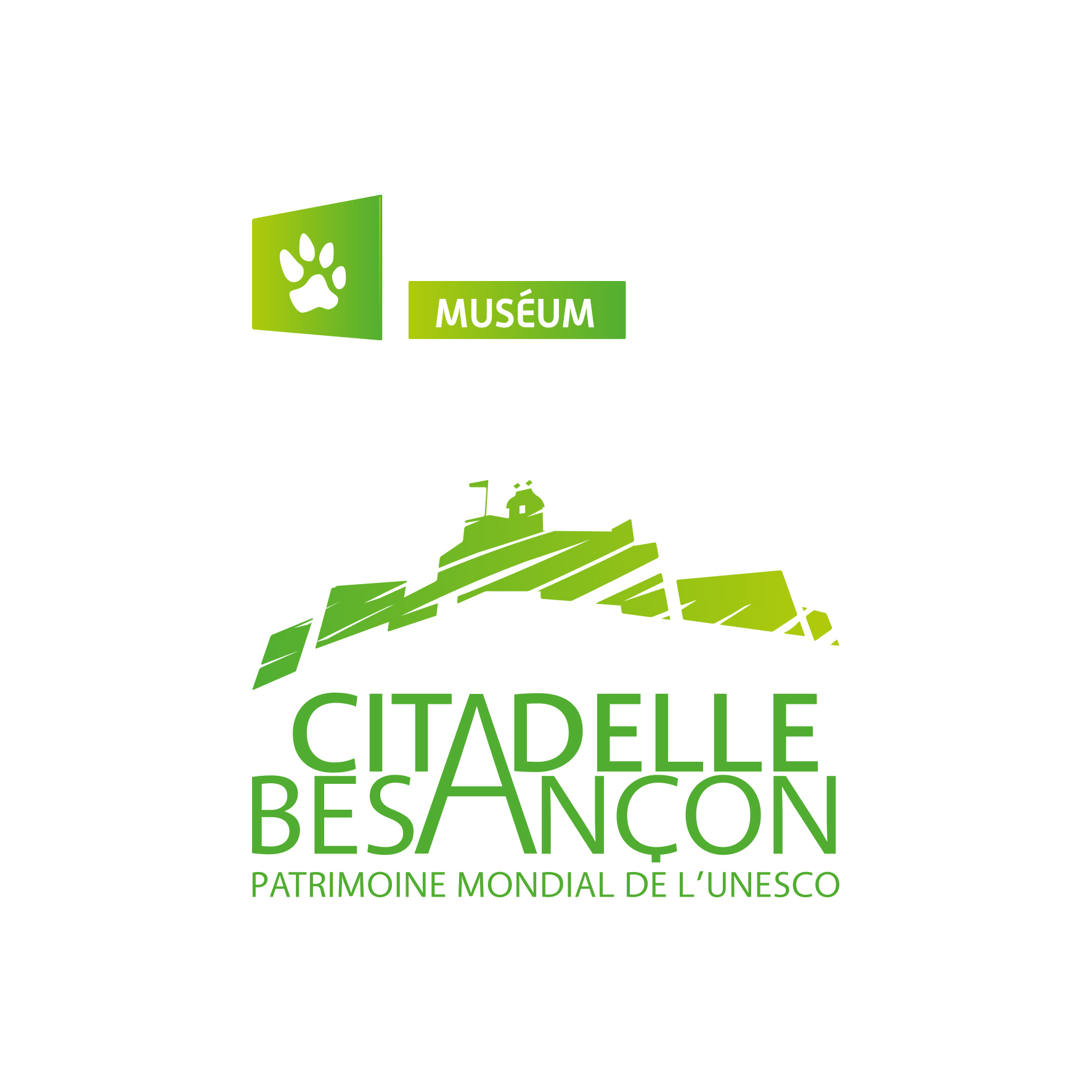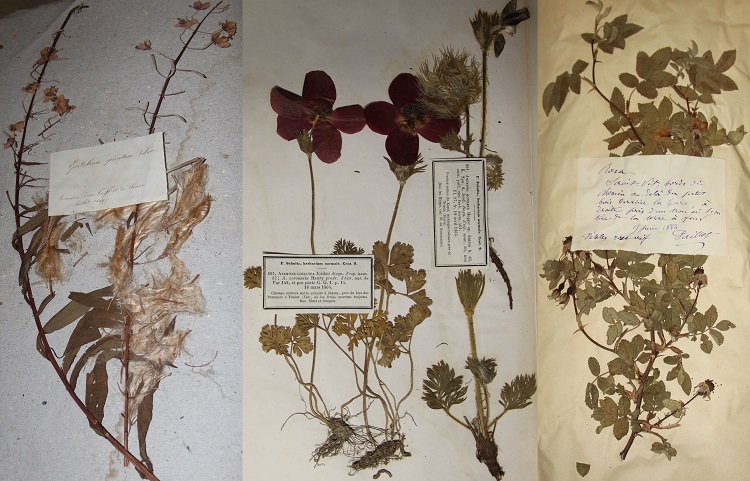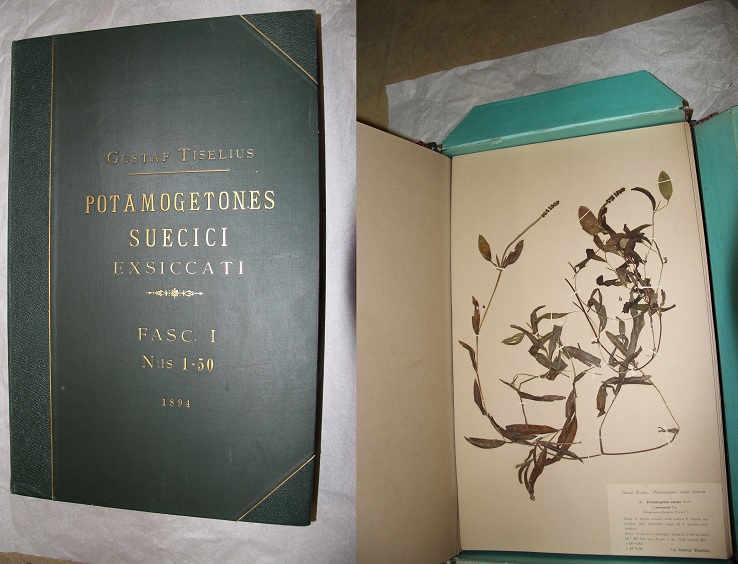
Natural History Museum of Besançon
The Natural History Museum of Besançon, located in the Vauban citadel, holds the herbarium of the former Institute of Botany of Besançon, and the University of Franche-Comté. This collection (early 19th century) comprises a volume of half a million units. About 250,000 pieces can be studied for scientific and historic purposes. On over 50 herbaria, over half are considered exceptional.
The following collections underwent thorough attachments and digitization as part of the E-ReColNat program (RECOLNAT-ANR-11-INBS-0004).
Attachment:
- Jean-Charles Grenier herbarium (made in 1843-1869) France and Belgium. It is estimated at 2,450 pieces. He was professor at the University of Besançon, and director of the Botanical Garden (at the time located in the dooryard of the old Medicine School) between 1845 and 1875.
- Charles Magnier herbarium (made in 1878-1897) France. It is estimated at 8,000 pieces. He is renowned for composing and publishing 2 exsiccati collections, the Flora Selecta Exsiccata, and the Plantae Galliae Septentrionalis et Belgii.
Digitization:
- Charles-Louis Contejean herbarium (made in1840-1890), France including Franche-Comté and Poitou-Charentes, Russia, and several legacies of specimens from Algeria, Mediterraneé, etc. It is estimated at 11,000 pieces. Considered as one of the most beautiful herbaria of Franche-Comté.
- Antonin Tronchet herbarium (made in 1950) France, including Franche-Comté. It is estimated at 2250 pieces. Professor at the University of Besançon, he taught botany, and achieved a fruitful research career on revolving movement of stems and tendrils (we possess 41 films though all are certainly not fit for data mining).
- Gustaf Tisselius herbarium (made in 1895-1897), Northern Europe (Sweden, Germany). It is estimated at 150 pieces. The collection from this Swedish botanist is arranged in 3 bound volumes, stored in boxes titled “Potamogetones Suecici Exsiccati”.
In addition to the herbaria treated by the E-ReColNat program, we also hold additional exceptional herbaria:
- Philiberts Babey herbarium (made in 1833-1894). Specimens from France (especially Franche-Comté) and from all over the world (Chili, Russia, etc.) It is estimated at 35,500 pieces.
- Eugène Michalet herbarium (made in 1856-1864). Specimens from France, and in particular the Jura department. It is estimated at 1,950 pieces.
- Paul Constant Billot herbarium (made in 1850-1860). Specimens from France. It is estimated at 12,200pieces. A lot of plants collected by Billot in the town of Haguenau and its surroundings have now disappeared. He played an important part in how the centuries are distributed.
- F. G. Schultz herbarium (made in 1858), Bas-Rhin, France, and Poland. It is estimated at 2,000 pieces. Ready for attachment and digitization, beautiful herbarium.
- Louis Hillier herbarium (made in 1943-1954), 1,500 Bryophytes pieces bequeathed to the town of Besançon. An inventory done on paper is enclosed in an envelope for each folder.
- Another Louis Hillier herbarium (made in 1877-1889) of 9,000 pieces collected in France, and Franche-Comté. Herbarium of higher plants, with a note from the author “rehabilitated Hillier 1933”.
- Carestia herbarium (made in 1862-1899), estimated at 5,800 pieces collected in Jura, France and Italy. Referenced herbarium for Jura and Franche-Comté, some annotations from the author.
- E. Poux herbarium (made in 1860-1910), France and Franche-Comté, about 9,300 pieces. Very precise herbarium, with several details on the Besançon area.
- H. Blanche herbarium (made in 1859-1866), estimated at 1,200 pieces from Jura and France.On the labels: Ex Herbarium Henrici Blanche (Dole, Jura).

Sheets of the Michalet Herbaria, Schultz and Paillot © D. Steck, Muséum, Ville de Besançon

Sheet and cover of Tiseulius Herbarium © D. Steck, Muséum, Ville de Besançon

Sheets of the Collinet Herbarium © D. Steck, Muséum, Ville de Besançon